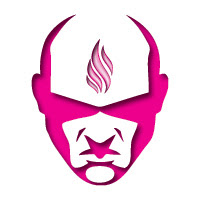We all know someone (typically 50+) who’s looked at their phone and said in an exasperated tone: “All I want it to do is make calls”. So at the fundamental level this product is a large, easy to use UI with simple access to a small range of core functions.
Of course once someone is happy with the basics they then immediately want to do more - regardless of what was said before - so a set of pre-bundled apps for enhanced security (digital and personal) immediately then takes them to the next level.
Appropriate apps exist already for older phone-users and many more are only a matter of time. However the app markets, as with a great many online content channels, are becoming large and un-navigable. And if there was any user demographic that would be likely to embrace a curated service it’s this one.
Example core apps (all of these exist at various stages of maturity/sophistication and are free)
- Fall detector with sequential help escalation (from next of kin to emergency services)
- GPS location tracking for those inclined to wander off
- Medication reminder app
- Health, mental health, nutrition monitoring apps
- Family/social-network calendar with reminders (birthdays, anniversaries, etc)
Additional lifestyle apps (optional but targeted)
- Information resources
- Health and fitness
- Dating (it's true - they're out there in numbers)
- Etc, etc, etc
As a channel curator we could ask for a cut of any activated apps. Also handset manufacturers and network operators could target this under-penetrated market segment using a bundled UI and app offering.
This can be targeted at the children (adult) of the elderly. These key influencers on the elderly are more likely to adopt/use smartphones, need less convincing of the platform’s benefits – giving space to focus on user the specific value-add – and are willing to act.
It could also lead to similar concepts for the mentally disabled and those with mobility disabilities.

